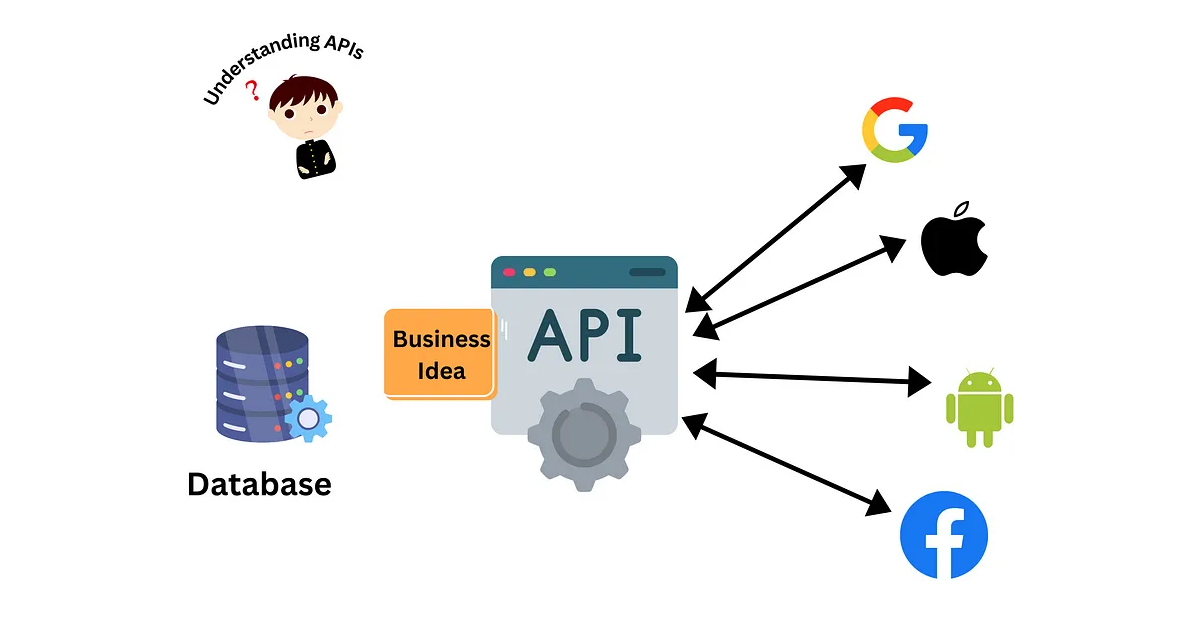
Demystifying API Development and Integration: A Beginner’s Guide
The digital world thrives on connections and interoperability. From apps on your phone syncing with cloud storage, to online stores integrating payment gateways, this seamless interaction is often facilitated by APIs (Application Programming Interfaces). But what exactly are APIs, and how are they developed and integrated? This guide simplifies the complex world of API for beginners.
In the most basic sense, an API is a set of rules and protocols for building and interacting with software applications. Imagine it as a waiter in a restaurant: you (the user) give an order (request), the kitchen (a system) prepares your meal, and the waiter (API) brings it to you.
Introduction: Understanding the API Universe
1. The Foundations: Different Types of APIs
APIs come in different flavors, each serving a specific purpose:
Web APIs: Used to enable applications to communicate with each other over the web.
Database APIs: Allows communication between an application and a database.
Operating System APIs: Helps software make requests for basic services from underlying operating systems.
Third-party APIs: Developed by external entities to provide functionality without developers building those features from scratch.
2. Development Considerations: Crafting a Robust API
Before diving into development, certain considerations set the stage for a stable API:
Security: Protecting data is paramount. Considerations like encryption and secure endpoints are vital.
Versioning: Over time, your API will evolve. Implement version control from the start to avoid breaking existing integrations.
Rate Limiting: Limit the number of requests a user or system can make within a certain time to protect your API’s integrity and availability.
3. Languages & Frameworks: Tools of the Trade
Popular languages for API development include:
JavaScript (Node.js): Express.js and Hapi.js are popular choices in the Node ecosystem.
Python: Django and Flask offer powerful ways to whip up APIs swiftly.
Ruby: Ruby on Rails, with its ‘convention over configuration’ approach, facilitates quick API development.
4. Data Formats: JSON vs. XML
While APIs can use various formats to transmit data, JSON (JavaScript Object Notation) and XML (eXtensible Markup Language) are dominant:
JSON: A lightweight format that’s easy to read and write. It’s popular due to its simplicity and scalability.
XML: A markup language that’s both human and machine-readable. It’s more complex than JSON but offers a structured presentation.
5. API Testing: Ensuring Functionality and Reliability
Before deploying, APIs must be rigorously tested:
Unit Testing: Validates individual parts of the API in isolation to ensure they function as intended.
Integration Testing: Checks the API’s interaction with other systems, ensuring data flow and processes work correctly.
Load Testing: Simulates a large number of requests to ensure the API can handle high traffic.
6. Documentation: A Roadmap for Integrators
An API, no matter how well-developed, is useless without proper documentation:
Endpoints Explanation: Detail each endpoint, its purpose, the expected input, and output.
Authentication Protocols: Clearly outline how users or systems should authenticate.
Sample Code: Provide sample code snippets in multiple languages for users to quickly integrate and test your API.
7. Integration: Making the API Talk
Once your API is developed, it needs to be integrated with other systems:
Middleware: Acts as a bridge between your API and other applications or systems, ensuring smooth data transfer.
SDKs (Software Development Kits): Offer pre-written code in various languages, making it easier for developers to integrate your API into their projects.
8. Post-Deployment: Monitoring and Maintenance
The API journey doesn’t end after deployment:
Monitoring: Use tools to continuously monitor API health, performance, and potential errors.
Feedback Loop: Encourage users to provide feedback, helping in refining and enhancing the API over time.
Conclusion: Embracing the API-first World
In the interconnected digital landscape, APIs are the unsung heroes, working behind the scenes to power our favorite tools, platforms, and technologies. By understanding their development and integration, businesses and developers can harness the true potential of an API-driven ecosystem, paving the way for innovative solutions and a more integrated future. Embarking on the API journey might seem daunting, but with the right approach, it’s a path laden with opportunities and growth.
0



